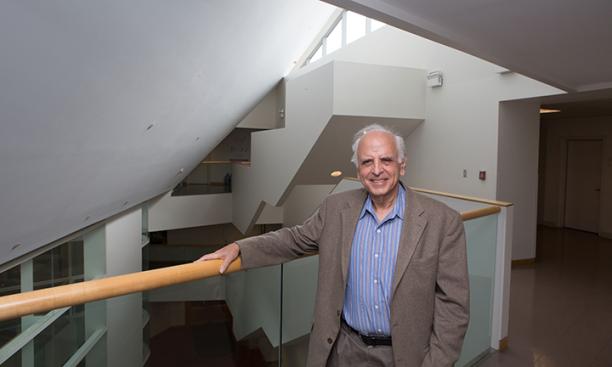
Composers & Computers, a new podcast series from Princeton’s School of Engineering and Applied Science, started with a fun fact. In the early days of the E-Quad’s Computer Center, when time on the University’s IBM mainframe was dominated by faculty with sponsored research projects, some of the machine’s most frequent users outside of that core group came from an unexpected place: the music department.
Aaron Nathans, digital media editor for the engineering school, learned that in a conversation with Ken Steiglitz, the Eugene Higgins Professor of Computer Science, emeritus.
“I used to be a newspaper reporter, and I know a great story when I hear one,” Nathans says. “And it was a better story than I could have expected.”
Through interviews and research, Nathans discovered interwoven storylines about science, art, friendships, and the extensive interdisciplinary links between the computational and musical realms at Princeton. His reporting eventually led him to produce the five-part Composers & Computers series, which launched earlier this month.
The series begins with the work of Milton Babbitt *42 *92, a noted theorist who composed 12-tone music for an analog synthesizer in the 1950s, and traces a path to the present, telling the stories of a current generation of computer-generated music pioneers. Along the way, the episodes delve into some of the early technical challenges in the field (synthesizing speech, for example) and showcase the work of several notable Princeton faculty and alumni, including James K. Randall *58, who created some of the earliest surviving recordings from the Princeton Computer Center using software from Bell Labs, and the prolific composer Paul Lansky *73, the William Shubael Conant Professor, emeritus.

Why was Princeton at the leading edge of computer music? Geography played a role, Nathans says: In addition to being 40 miles down the road from Bell Labs, the University was linked to nearby researchers at RCA. But Nathans also credits the atmosphere on campus, where composers and computer engineers had “freedom to … go down unexplored paths and see where they lead — and nobody over your shoulder telling you not to do that.”
While many of the innovative composers at Princeton eventually returned to acoustic instruments, they maintain pride in helping the wider computer-music ecosystem grow. “A lot of them feel like there really is no such thing as computer music anymore,” Nathans says, “that it’s just music and that a computer is just another tool to make music.”
